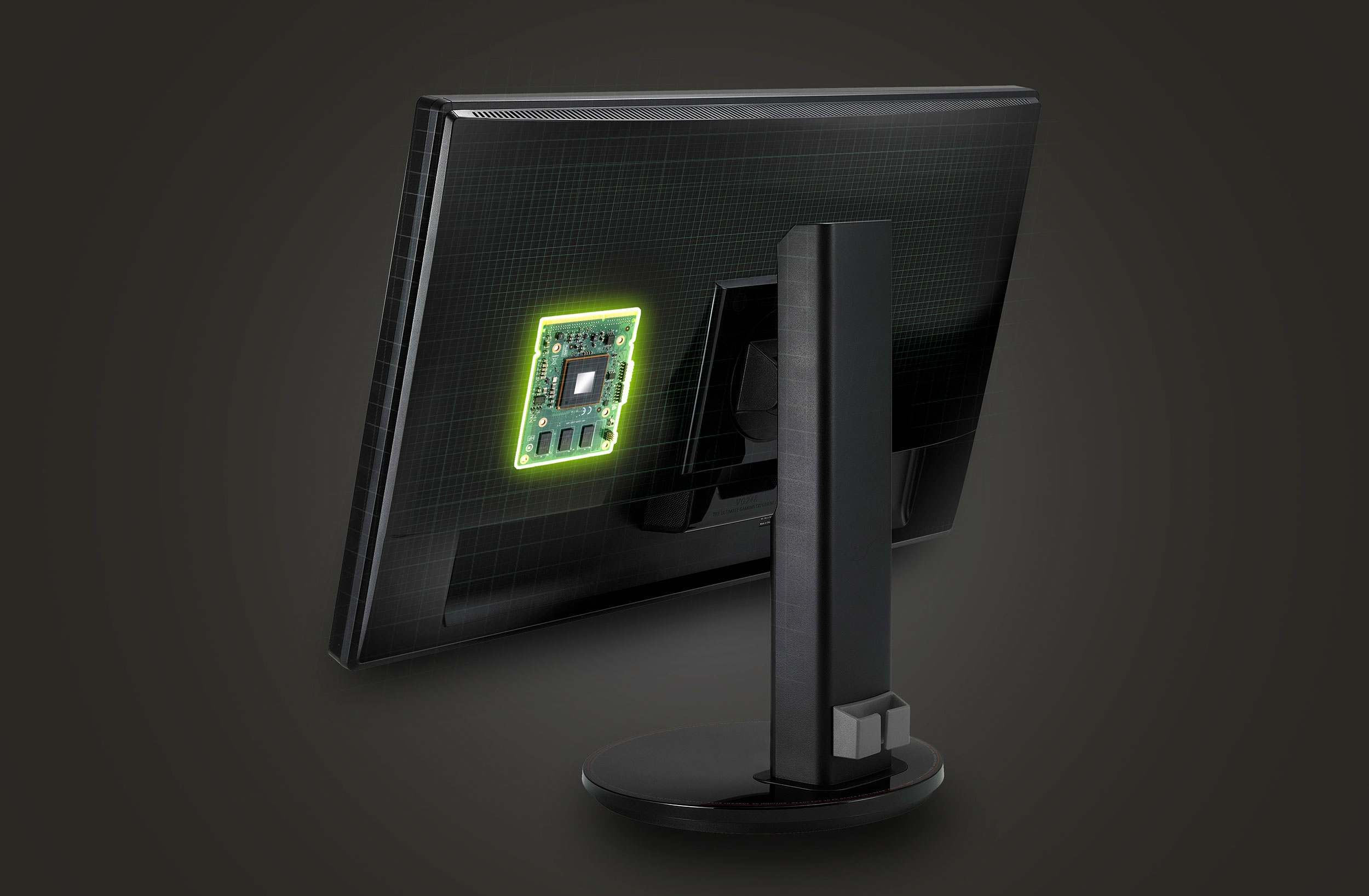AMD Graphics Cards Will Work With Future G-Sync Monitors

It looks like good things do come to those who wait. A recent TFT Central report reveals that Nvidia is finally opening up its G-Sync technology, which fights screen tearing on gaming monitors but has been reserved for PCs running an Nvidia graphics card, to AMD graphics card owners.
Choosing between a G-Sync and FreeSync monitor used to be straight-forward. You were basically confined to the first if you owned a Nvidia graphics card and to the latter if you had an AMD graphics card. However, Nvidia in January added Variable Refresh Rate (VRR) support to its GeForce graphics cards, so people could use G-Sync with monitors lacking Nvidia's proprietary chip, as long as it complied with VESA's DisplayPort Adaptive Sync standard and Nvidia validated it. They call these monitors G-Sync Compatible. We've even found that some FreeSync monitors not certified as G-Sync Compatible can run G-Sync if you follow our instructions on how to run G-Sync on a FreeSync monitor.
However, AMD graphics card owners have still been unable to use a monitor's G-Sync feature. Now, six long years after G-Sync's introduction, Nvidia has finally decided to welcome the Red Team.
TFT Central confirmed with Nvidia that future G-Sync monitors will support HDMI-VRR and Adaptive Sync over HDMI and DisplayPort. Naturally, a new firmware will be required to bring the two new features to the G-Sync displays, and one for both the G-Sync v1 and v2 hardware modules is already in the works. Basically, this means that AMD graphics card and console owners will be able to use a G-Sync monitor with their setup.
"So if you have an AMD graphics card, you could still enjoy the VRR experience and other additional benefits that the G-sync module brings even from a native G-sync screen, which was previously out of reach to those users," TFT said. However, it's uncertain if users will be able to reap G-Sync's full benefits.
But there is a caveat. The new firmware will only be compatible with future G-Sync displays, such as the Acer Predator XB273 X. Nvidia told TFT Central that the new firmware will not work with existing G-Sync monitors on the market.
Get Tom's Hardware's best news and in-depth reviews, straight to your inbox.

Zhiye Liu is a news editor, memory reviewer, and SSD tester at Tom’s Hardware. Although he loves everything that’s hardware, he has a soft spot for CPUs, GPUs, and RAM.
-
tennis2 But....why? To allow your vendor-locked lemurs to buy AMD GPUs?Reply
Just stop making GSync modules. They've clearly outlived their useful lifespan. Thank you Nvidia for whatever part you played in getting VRR adopted, but the industry has moved on. -
King_V Agreed - what's the point of making G-Sync modules anymore? Who's going to buy GSync monitors, or why would they?Reply -
CatalyticDragon "TFT Central confirmed with Nvidia that future G-Sync monitors will support HDMI-VRR and Adaptive Sync over HDMI and DisplayPort"Reply
You really need to change the title of this post. NVIDIA isn't allowing AMD to use G-Sync. NVIDIA is simply, finally, supporting open standards. NVIDIA trying to rebrand completely open adaptive sync technologies under its own G-Sync name is just plain evil. -
tennis2 Yeah. I was just watching one of the latest Linus Tech Tips videos where he reviewed the LG OLED "GSYNC" TV. Pissed me off even he was misconstruing naming.Reply
And to be fair, I don't think VRR should be referred to as FreeSync anymore either. -
setx Let me rewrite the article for you in non-marketing speak:Reply
"nV just completely lost the format war and no one wants to use their proprietary chips anymore. The money they spend on press to shove "GSYNC" word on everything don't help at all. The future is so bleak that they are going to support open standard just to sell the chips to anyone in the future." -
cryoburner Will these new "G-sync" screens even be using a G-Sync module? Like I said when they first started supporting FreeSync displays back in January, it seems likely that they will eventually retire classic G-Sync, in favor of the version of adaptive sync that's based on an open standard and is more universally supported. I suspect next year's consoles will both have full support for adaptive sync, and Intel's upcoming graphics cards should as well, but they are unlikely to support the feature on classic G-Sync displays. It seems likely that G-Sync will just become what "G-Sync Compatible" is today, a certification process for FreeSync displays.Reply -
bit_user Reply
As much as I love lemurs (and the image of lemurs gaming), I think you mean lemmings.tennis2 said:To allow your vendor-locked lemurs to buy AMD GPUs? -
bit_user Reply
They're not interchangeable, although AMD took the approach of building FreeSync on top of open standards.tennis2 said:And to be fair, I don't think VRR should be referred to as FreeSync anymore either.
So, any FreeSync display will support VRR with other vendors' GPUs that are also standards-based. However, I think you could have a VESA VRR display that's not technically a FreeSync display, though I don't know if there are any FreeSync features that wouldn't work, or if that just means it wouldn't have any certification from AMD. -
Slack29 I am looking at: Dell 24in G-Sync Gaming Monitor @ https://www.costco.ca/dell-24in-g-sync-gaming-monitor-(2560-x-1440).product.100529456.htmlReply
However, after reading this I am a little concerned about running it on my AMD card... any thoughts?